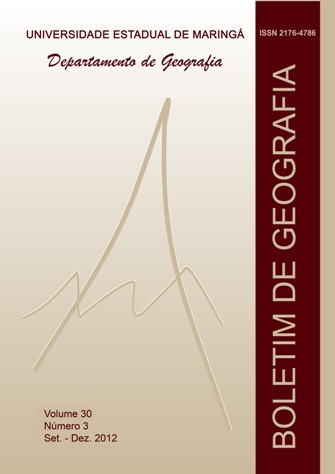Air temperature and relative humidity standards: case study in the Cuiabá campus of the Mato Grosso Federal University
Abstract
The land use in urban areas is largely responsible for variation in climate elements, especially in the microclimatic scale. Therefore, this article aims to analyze the air temperature and relative humidity standards in 15 sites in the Cuiabá campus of the Federal University of Mato Grosso, in two periods (April and September of 2010) at 8h, 14h and 20h. From the analysis it was found that land use was central to the values of air temperature and relative humidity, and the sites with asphalt pavement presented the highest temperatures and lowest humidity levels. The most expressive examplea of this occurred at the site 7 in April, and at site 15 in September. In short, it became clear the distinct standard of the thermo-hygrometric field in the collection sites, and also in the times and periods of collection, characterizing a space-time variation.
Downloads
O Boletim de Geografia está licenciado através da Creative Commons Atribuição 4.0 Internacional (CC BY 4.0).
Autores que realizam submissões ao Boletim de Geografia concordam com os sequintes termos:
- Autores retêm todos os direitos autorais e concedem à Revista direitos exclusivos da primeira publicação, com o artigo licenciado sob os termos da Creative Commons Atribuição 4.0 Internacional (CC BY 4.0).
- Após a publicação, fica permitido ao autor a republicação em qualquer outros meios de divulgação, desde que mencionada a fonte original.












